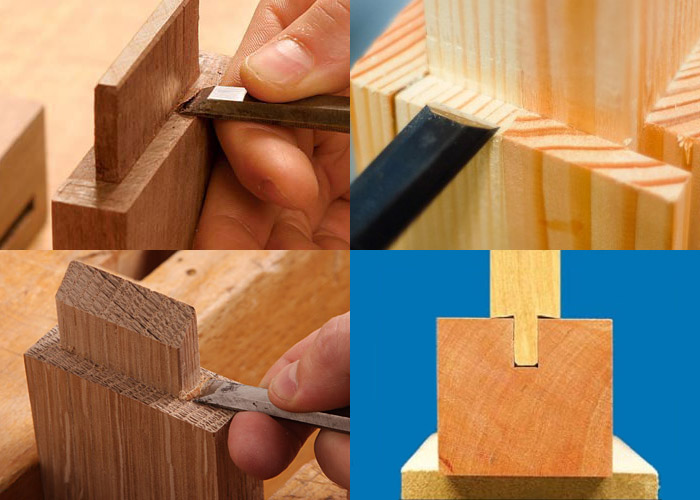I have a slight gap in a mortise & tenon joint. anyone have a cover-up or fix for slight gap in joinery?
-
1Presume the piece can't be taken apart to actually fix it? And is the gap at the shoulder line?– GraphusCommented Apr 8, 2018 at 11:12
-
1yes, and yes. I'm thinking of putting glue in the gap and then some sawdust i saved from sanding. thoughts?– benmilkstCommented Apr 8, 2018 at 12:13
-
1Yes that can work, but best results are not achieved using regular wood glues. I'll put in an Answer in a short while.– GraphusCommented Apr 8, 2018 at 12:30
1 Answer
Obviously the best solution here is to avoid the gap in the first place by careful test-fitting of joints prior to final glue up and then during final assembly using sufficient clamp pressure to close up joints to their full extent.
When you do get a gap (and everyone does on occasion!) there are of course commercial wood fillers, but it seems the commonest solution given on the Internet is to use a mix of sanding dust from the same species and glue. I wish it were that simple but see this previous Answer:
Making wood filler from sawdust
As I covered previously, despite claims to the contrary this is almost never a good colour match to the surrounding wood unless you use hide glue. But if you were you'd be unlikely to have a gap like this in the first place since, unlike with other glues, the joint could be opened with careful application of heat and moisture and then the cause of the gap fixed.
Helping to prevent gaps at the shoulder in future
- Slightly undercut your shoulders by paring with a sharp chisel.
- Make your mortises a fraction deeper than the tenon is long (also provides a glue reservoir to prevent all excess being squeezed out when you clamp up).
- Don't apply too much glue as this can cause a hydraulic seal in the joint which can physically prevent the tenon going fully home. You do however need to ensure you use enough adhesive so that all glue surfaces are fully wetted.
-
To go with "don't apply too much glue" and "make the mortises deeper": no need to apply glue to end-grain surfaces. Including the end of the tenon, and the end grain on the shoulders. Glueing these surfaces confers little additional strength and it makes a mess! Commented Oct 17, 2018 at 2:15
-
1@init_js, yes, I've seen few people who put glue on the shoulders..... deliberately at least, some glue does tend to get on those surfaces unintentionally of course :-) As for the tenon's end, it's often well clear of the bottom of the mortise, and that surface is usually quite rough to put it mildly, so only if you were using epoxy and applying enough to fill the voids in the joint would you get any hold there worth nothing.– GraphusCommented Oct 17, 2018 at 12:03
